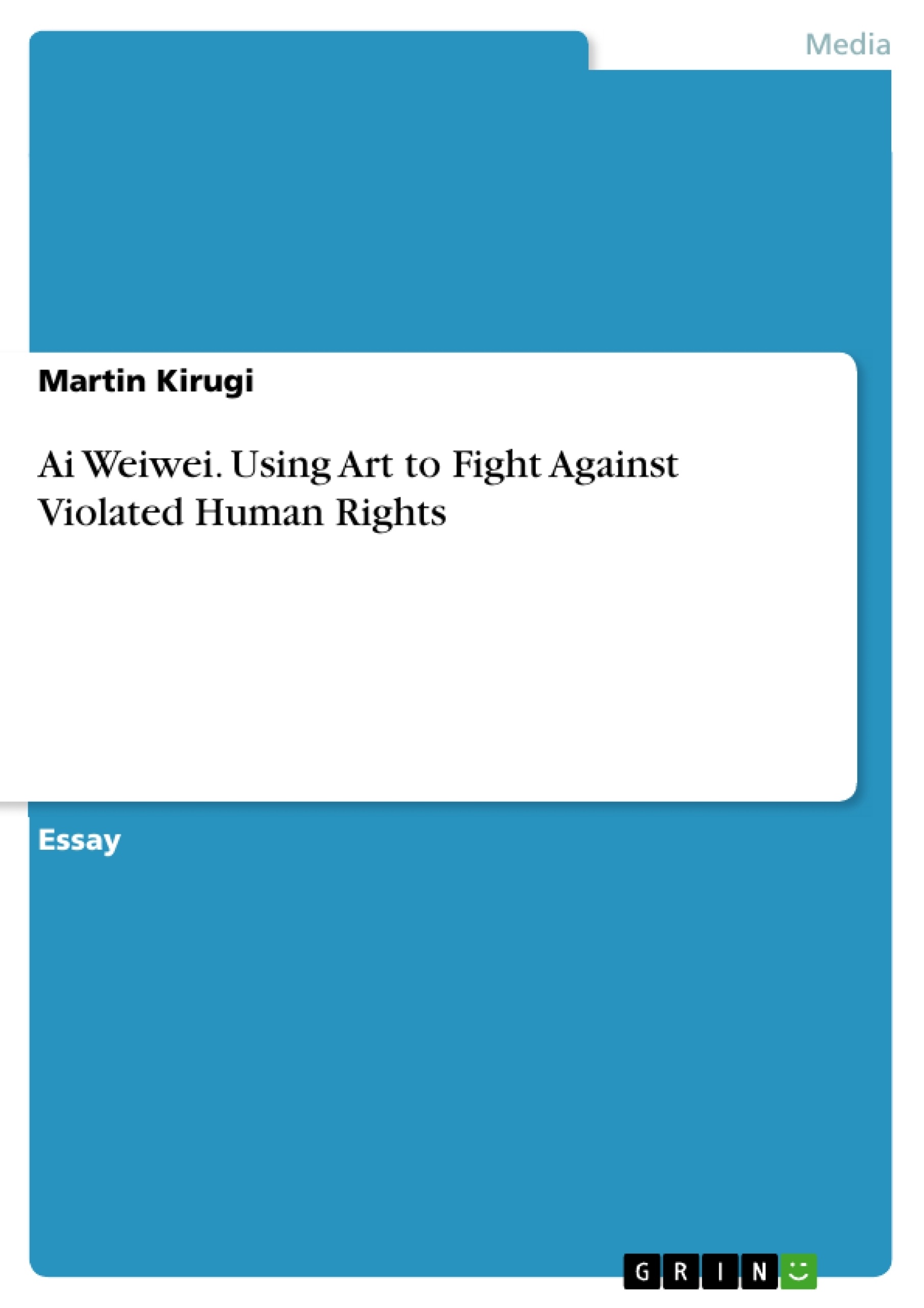This essay argues that Chinese artist Ai Weiwei is using his art to fight for violated human rights. Ai Weiwei is a world renowned Chinese artist, photographer, cultural and political critic who is ambitious and has the utmost self assurance of things working out. He was born in 1957 in Beijing, China. Weiwei comes from a family of artists who express the Chinese autocracy by means of art. The father Ai Qing was a Chinese poet and his wife, Lu Qing an artist too. Weiwei’s father was an active and very influential political and cultural activist during the mid nineteen fifties who ended up being imprisoned during the 1958 Anti-Rights Movement (Weiwei and Ambrozy, xxv). In New York, Weiwei undertook working odd jobs as a way of studying art and lived in the east village. Here he learnt more about political activism due to the frequent protests about the squatter and housing rights (Weiwei and Ambrozy, xix).
Inhaltsverzeichnis (Table of Contents)
- Ai Weiwei: A Rebellious Artist
- The Sichuan Earthquake and Corruption
- Art as a Weapon Against Oppression
- Sunflower Seeds: A Symbol of Humiliation
- The 'So Sorry' Exhibition
Zielsetzung und Themenschwerpunkte (Objectives and Key Themes)
This text provides a comprehensive analysis of Ai Weiwei's life and work, highlighting his role as a critical voice against the Chinese government and its oppressive practices. It examines the interplay between art, politics, and human rights in China, specifically focusing on the 2008 Sichuan earthquake tragedy.
- Ai Weiwei's artistic and political activism
- Corruption and abuse of power in China
- The impact of the Sichuan earthquake tragedy
- The role of art in challenging authority
- Human rights violations in China
Zusammenfassung der Kapitel (Chapter Summaries)
- Ai Weiwei: A Rebellious Artist: This chapter introduces Ai Weiwei as a prominent Chinese artist, photographer, and political critic. It outlines his family background and early experiences that shaped his critical perspective on the Chinese government. The chapter delves into his artistic contributions and his outspoken criticisms of the Chinese legal system and its shortcomings in protecting human rights and democracy. It also highlights the government's attempts to silence Weiwei by closing his studio and blogs, as well as his arrest and detention on charges of tax evasion. The chapter emphasizes how Weiwei's art often serves as a powerful commentary on the Chinese regime, highlighting its corruption and oppression.
- The Sichuan Earthquake and Corruption: This chapter focuses on the 2008 Sichuan earthquake tragedy and its connection to corruption within the Chinese government. It explores how corruption played a significant role in the loss of lives, particularly the deaths of students in poorly constructed schools. The chapter discusses the government's efforts to conceal the extent of the tragedy and its attempts to suppress protests from angry citizens. The chapter explores the concept of corruption as a systemic issue within the Chinese government and its impact on the well-being of the citizens.
- Art as a Weapon Against Oppression: This chapter explores how Ai Weiwei uses his art to challenge the Chinese government and its oppressive practices. It discusses the symbolism behind his art, particularly the "Snake Ceiling" installation, which was created using backpacks to represent the grief of parents who lost children in the earthquake. The chapter delves into Weiwei's use of mass media and art as a platform to raise awareness about human rights violations in China and the government's silencing of dissenting voices. It examines how Weiwei's art serves as a powerful tool to challenge the status quo and expose the injustices within the Chinese system.
- Sunflower Seeds: A Symbol of Humiliation: This chapter focuses on Ai Weiwei's "Sunflower Seeds" installation, analyzing its symbolic meaning. It discusses how the seeds, representing ordinary Chinese citizens, are crushed under the weight of the powerful and corrupt elements of society. The chapter connects this symbolism to Weiwei's own experiences of being silenced and imprisoned by the government. It explores how Weiwei's art reflects the struggles of ordinary people against oppression and the systemic corruption that pervades Chinese society.
Schlüsselwörter (Keywords)
This text focuses on the intersection of art, politics, and human rights in China. It delves into Ai Weiwei's critical art practice as a means of challenging the Chinese government's oppressive policies. Key concepts include: Ai Weiwei, Chinese government, human rights, corruption, censorship, Sichuan earthquake, art as activism, political critique, and social commentary.
- Quote paper
- Martin Kirugi (Author), 2012, Ai Weiwei. Using Art to Fight Against Violated Human Rights, Munich, GRIN Verlag, https://www.grin.com/document/312190




